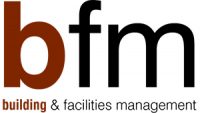Flexible workplaces need consistent hygiene

Steve Nurdin, marketing manager at Cannon Hygiene, discusses how changing workplace expectations are demanding more from facilities management’s role in hygiene.
Facilities management increasingly needs to accommodate new workplace practices such as flexible working while still providing a business with a high-quality service. Cleaning procedures also have to adapt to work in tandem with these shifting working patterns, to maximise efficiency and create a working environment with hygiene at its heart.
An increase in people working from home or visiting from other offices means businesses are adapting the way their space is used to take into account fluctuating numbers of people in one building. For example, many have created shared spaces through collaborative working hubs and hot desking policies.
Hygiene standards can become diluted as a result with more people sharing office spaces and transmitting bacteria. People’s attitudes and vigilance towards cleanliness often differs greatly and bad practices can encourage the spread of germs. This can seriously impact productivity in a business, especially during peak seasons for illnesses which can spread rapidly around an office and severely deplete a workforce.
To tackle this problem, there’s been a shift towards hygiene systems that work in the background to ensure levels of cleanliness are being automatically maintained, especially in shared spaces. For example, filters are now available that actively clean and fragrance the air, killing airborne bacteria and stopping illnesses from spreading. Shared surfaces such as door handles are another germ hotspot, but solutions are available that spray an antibacterial mist on washroom door handles to prevent germs from entering the wider office. Automated solutions can provide peace of mind that effective hygiene is remaining consistent at a time when flexible working is on the rise.
Appearance and functionality
People are generally more aware than ever of the impact of germs, driving hygiene to the forefront of facilities management. Washrooms, for example, are one of the most visited places in an organisation – people may share a desk with two or three, but a washroom with 50 others. As such, hygiene has to work much harder to match a business’ needs and expectations, demanding solutions that offer a top-class service. A washroom can not only affect employees’ opinions of their workplace but also a visitor’s impression of the business, so care should be taken to fit a suite that reinforces a positive company image.
As more businesses up their investment in facilities, it becomes more noticeable when a company hasn’t made the same commitment to their hygiene procedures. People expect the same levels of cleanliness in the workplace as they would at home or in a restaurant, and want to see a consistent and high quality hygiene policy being visibly practiced. From installing hand sanitisers across the office to actively promote good hand hygiene, to ensuring that doormats are kept well laundered and attractive, many businesses are now going above and beyond on their hygiene commitments to meet expectations.
Flexibility looks set to continue shaping workplace practices and maintaining a hygiene approach that reflects this should always be of high priority. By implementing a hygiene strategy that suits shifts in demand while staying consistent in its levels of service, facilities managers can be sure that their business continues to provide a quality environment for staff and visitors alike.





